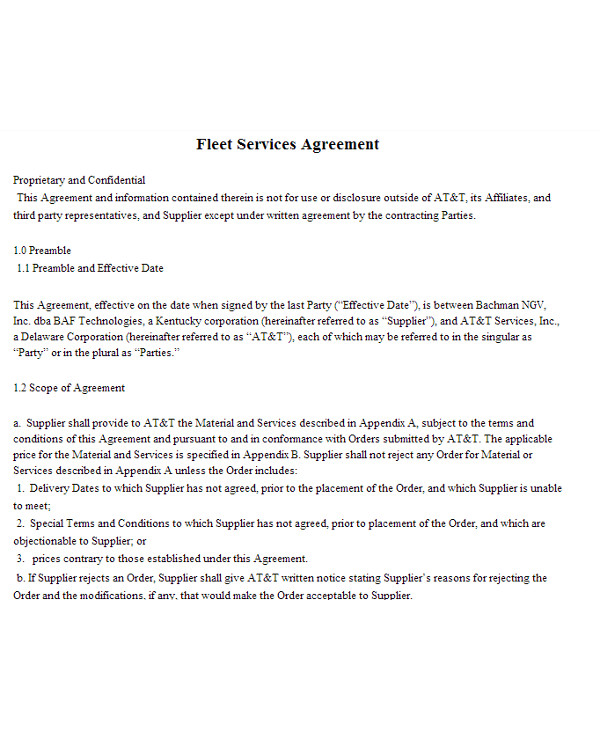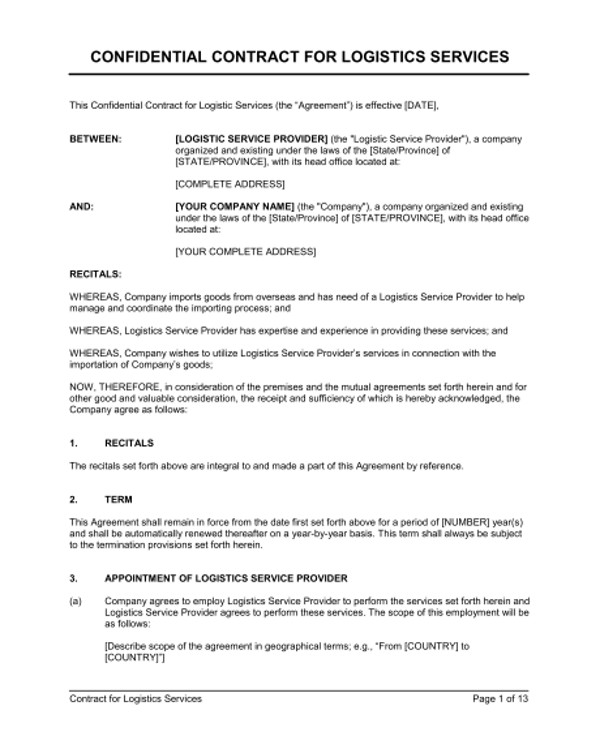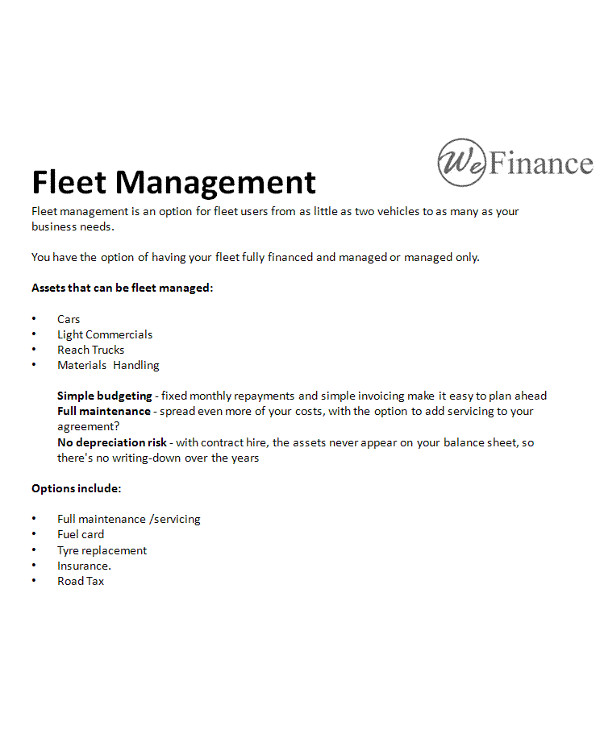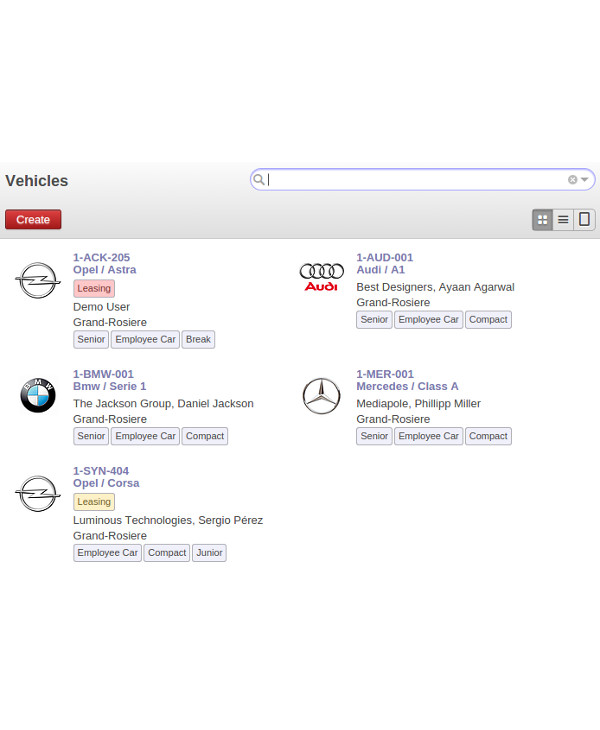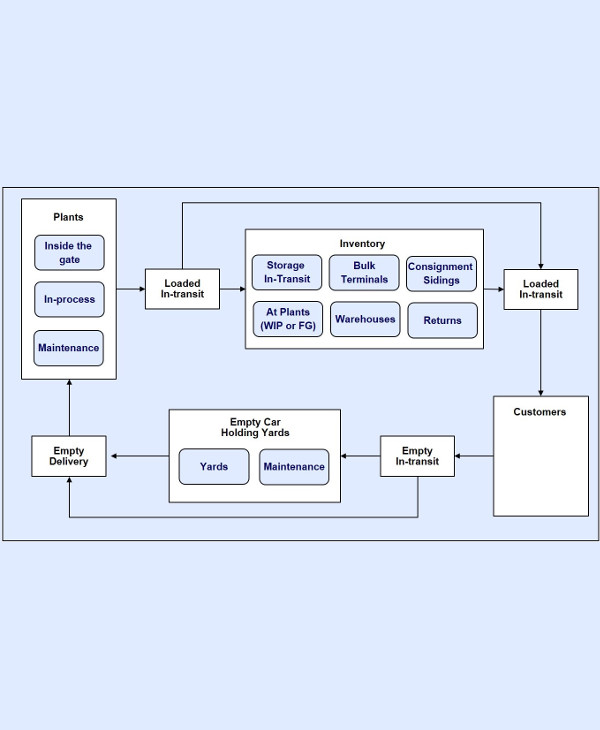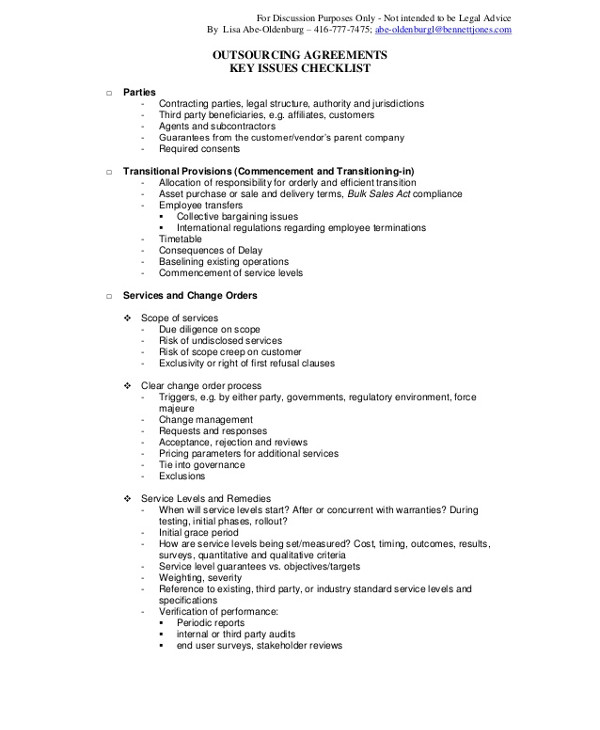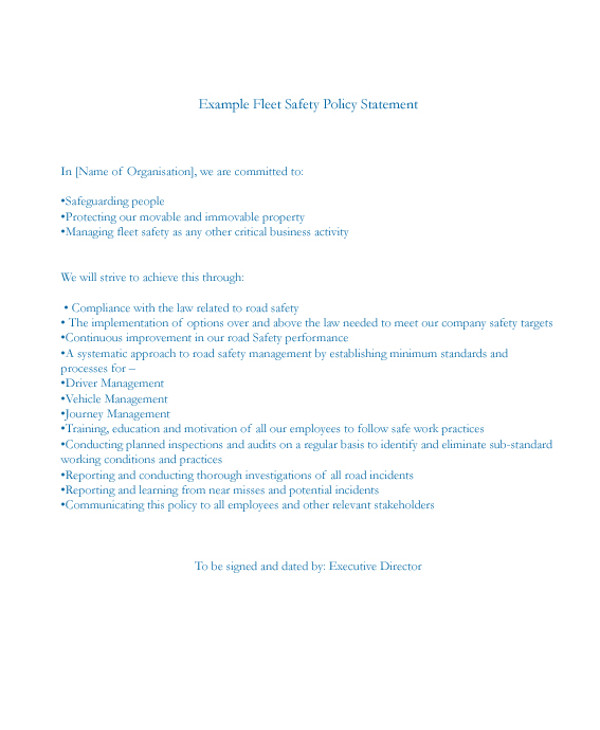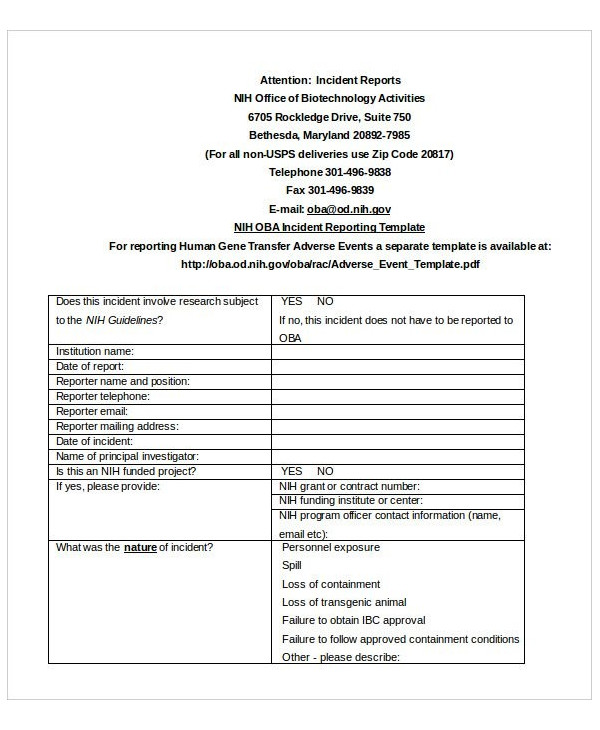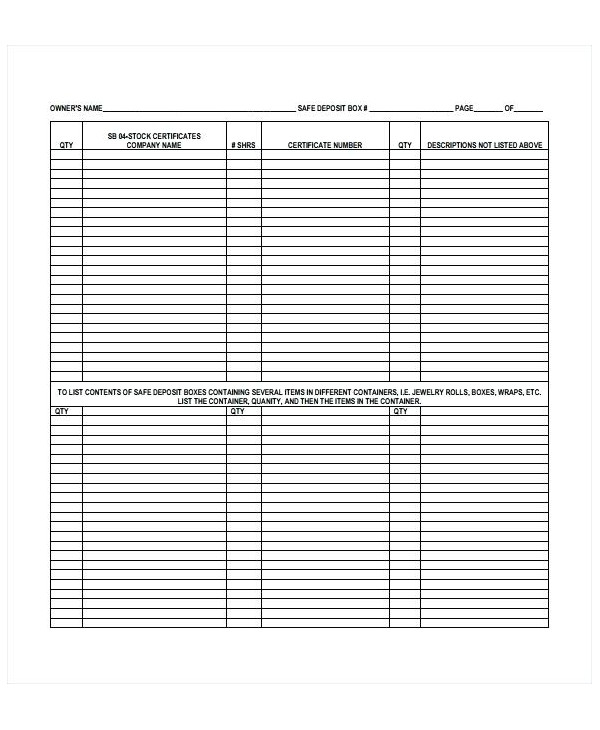9+ Fleet Management Contract Examples to Download
Fleet management is defined as the management of commercial motor vehicles such as cars, vans, trucks, specialist vehicles (mobile construction machinery), trailers, private vehicles used for work purposes, aviation machinery (aircraft), ships, and rail cars.You may also see maintenance contract examples
- 9+ Contract Manufacturing Agreement Template Examples
- 9+ Student Academic Contract Template Examples
Fleet or vehicle management can include a wide range of functions, such as vehicle financing, vehicle maintenance, vehicle telematics (tracking and diagnostics), driver management, speed management, fuel management, and health and safety management.You may also see business management contract examples
Fleet management is a function that allows companies who rely on transportation in business to remove or minimize the risk associated with vehicular investments, improving efficiency, productivity, and reducing their overall transportation and staff costs, providing a hundred percent compliance with government legislation and many more. These functions can be dealt with by either an in-house fleet management provider.You may also see Business manager contract template examples
Fleet Management Services Agreement Sample
Fleet Management Logistic Services Contract
Fleet Management Agreement Sample
Negotiating a Fleet Management Agreement
Successful fleet managers understand that their fate depends largely on their ability to select suppliers that best fit the fleet organization’s business goals. Whether via a general market research or a formal RFP, once a supplier is chosen, the next important step is negotiating the contract that will govern the relationship.You may also see yearly contract examples.
In the largest sense, there are two major areas covered in a fleet management agreement: the leasing (purchase or disposal) and services. The former is a financial transaction, while the latter focuses more on operations. Both involve processes and cost factors that are usually not negotiable. Within these two broad concepts, three issues are covered by the contract:
1. Cost.
The factors that make up the lease payment, along with any other fees involved in the transaction.
2. Contract Service.
The vendor’s responsibilities under the contract.You may also see employee contract examples
3. Contract.
The legal ramifications of entering into the agreement.
These three issues are a constant part and parcel of every fleet management agreement, and both vendors and their customers will benefit if they are addressed, clearly outlined, and understood.You may also see writing contract examples.
Tips in Negotiating a Contract
Fleet management agreements come in many shapes, sizes, and forms. Usually, the anchor for the agreement is the master lease agreement. For most mid-market and larger fleets, the lease in question is an open-end lease with a terminal rental adjustment clause. The agreement then describes other services the lessor may provide, with various addenda and attachments completing the document.You may also see purchase contract examples.
A master fleet leasing agreement is a relatively generic document. Its terms and conditions cover the following key terms:
- Minimum lease term
- Vehicle capitalization schedules
- Lease rate structure
- Payment terms
- Schedule A (a lease payment schedule should be made for vehicles leased under the contract)
- Schedule B (termination document, outlining the sale and TRAC adjustments if any)
- TRAC (the terms under which a vehicle is terminated and sold)
There are also other terms and conditions, of course, including standard boilerplate language that’s usually used in all contracts, and incorporating these into the fleet management agreement is up to the company.You may also see contractor agreement examples
The master agreement essentially states that the parties agree if a vehicle is leased, the agreement’s terms and conditions govern the transaction. But the lessee isn’t required to actually lease any vehicles under the master agreement. So the terms of the contract will be deemed irrelevant.You may also see small business investment agreement examples
The same rule applies for services provided. For maintenance management, for example, the free structure, the basic process, and driver materials are all covered, and similar terms and conditions are covered for accident management or other fleet administrative programs.You may also see HR contract samples
But, again, the point is that the basic agreement does not require the fleet to lease or place under a management program any vehicles at all. It only contains the terms that cover those that may be.
Company Fleet Management Software
Fleet Management Contracts and Administrative Follow-Up
How to Manage Your Fleet Management Company
Managing a fleet of company vehicles is a complex and rewarding profession. It takes an unusually broad range of skills and experience, and in today’s economy of reduced headcounts and budget cuts, it takes smart, careful choices in outsourcing.
Today, fleet management companies can provide services to cover any and every process or need a fleet manager has, and when fleet managers have limited staffs or none at all, these programs can be lifesavers. With that being said, however, outsourcing now brings a new responsibility to the fleet management table: managing suppliers. Doing so can leverage the fleet manager’s effectiveness substantially.You may also see investment contract examples
Determining What to Outsource
Before developing strategies to manage a fleet management company, fleet managers need to break down various processes in the department and determine what should and should not be outsourced. The ultimate goal in outsourcing should be to bring in expertise and resources the fleet manager lacks, while at the same time maintaining control.You may also see service agreement contract template examples
There are two broad categories of activity in fleet management: clerical or administrative and management.
Distinguishing between the two is the first step in determining what can and should be outsourced. Clerical and administrative activities include the following:
1. Communication.
Not what is to be communicated, but the actual form of communication itself. This includes emails, company intranet, telephone, and hard copy or snail mail distribution of information.You may also see employment contract examples
2. Paper flow.
Registration renewals, title transfers, payment of fines and violations, new vehicle order placement, and any activity that involves the completion of forms or other paperwork.
3. Data capture and access.
Most fleet management companies provide tools that capture critical cost data, which the fleet manager can access.You may also see tutoring contract examples
These aforementioned activities don’t require any specific fleet management expertise or decision-making. They don’t involve how company resources are used on a day-to-day basis. These are only tools used.
Management activities, on the other hand, would include:
- Determining policy, such as who qualifies for a company vehicle, what vehicles are provided, and how long they will remain in service.
- Deciding when to repair and when to replace damaged vehicles.
- What repairs should and should not be done.
Put simply, administrative and clerical activities encompass how things are done, while management activities are about what is to be done. Anything that involves the allocation of company resources, such as time, people, and money, should not be outsourced.You may also see workforce agreement examples
Acknowledging Partnerships
The fleet and fleet supplier connection is a partnership, and any successful partnership requires input and work from both parties. Fleet is no exception. Here are some ways that can help a fleet manager ensure successful supplier programs:
Be honest. Sounds obvious, but sometimes, when there is a problem, a customer, or the supplier, will insist upon pointing fingers. This only accomplishes a drawn-out event, with bad feelings on both sides. If information wasn’t sent, the wrong color vehicle was ordered, or an email was neglected, admit it, and be quick about it. Otherwise, you can’t expect honesty from your suppliers too.You may also see free agreement examples
It’s also important to remember that pointing fingers will get you nowhere. Instead of looking for who to lay the blame on, why not refocus your energies finding a remedy? Never waste time squabbling over whose fault is what.
When a supplier makes a mistake, big or small, don’t spend time and resources trying to prove their culpability, or find out exactly who messed up. Solve the problem and figure out how to avoid it from happening again.You may also see business contract samples
Don’t focus exclusively on what a supplier has to offer. Instead, try to work together to determine what can be done for each other. While keeping in mind that suppliers enjoy standardization, make suggestions that they might be able to use, not only for your partnership with them but with others as well.
Make a room for both minor exceptions, as well as major contingencies. For example, good fleet managers can have a plan B for build out rather than getting stuck with orders that can’t be filled. Communicate those plans to suppliers.You may also see project contract examples
Share information with suppliers regularly. Information is the grease that makes a fleet or a supplier relationship run smoothly. This helps both the fleet and the vendor to move quickly.
Share the relationships with both sides of senior management. Meet the supplier’s leadership and try to arrange for them to meet yours. Remember the fleet/supplier relationship isn’t just a matter of getting the lowest price possible, or the supplier doing as little as possible for that price. Successful relationships involve work on both sides and the recognition that both sides can, and should, contribute to success.You may also see example of a contract samples
Sample Railcar Fleet Management Cycle
Fleet Management Services Outsourcing Agreement
Fleet Management Contracts
The most basic document that should govern the fleet-supplier relationship, and every business relationship for that matter, is the master agreement. Whether it contains only a lease, services, or booth, it is the master contract that, if the fleet manager can negotiate it carefully and wisely, will make managing the vendors much easier.
On the lease side, the master agreement contains these key provisions:
1. The basis for determining the capitalized cost of vehicles leased.
2. The structure of the lease rate factor, including amortization rate, cost of funds, and lease or administrative fee.
3. Minimum lease term.
4. Terms for selling off-lease vehicles.
There are, of course, other terms and conditions, but the ones we’ve given are the factors that will determine the cost of a vehicle lease under the contract and the terms to which it is leased and disposed of. So, pertaining to lease, what does a fleet manager need to manage?
1. Amortization rates.
Don’t accept “standard” rates. Match rates to anticipated use and mileage.
2. Keep an eye on the application of resale proceeds. Do a spot audit each month, and make certain that, when vehicles are sold, the proceeds are applied and the vehicle is taken off the billing promptly.
3. Remain flexible
Circumstances naturally change, including vehicle types, replacement policies, territory realignments, and job functions. Fleet managers need to be nimble and make changes whenever and wherever it is needed.You may also see advertising contract examples
The master agreement can also include services, such as the four core fleet management programs. Provisions in the contract primarily cover program fees including the following:
1. Per vehicle monthly fee for maintenance management.
2. Per occurrence fees for accident management.
3. Subrogation recovery fee, which, usually, is a percentage of the recovered funds.
4. Rebates or discounts for maintenance and fuel program activity. Such fees and rebates or discounts, once negotiated into the contract, don’t require managing, other than the normal audit activity. But, there are areas where a fleet manager can manage the supplier, both tactically and strategically.You may also see agent contract examples
5. Account setup: This is the most critical element of program success. Setting up the procedures, authorization levels, and workflow will govern how the program works. Keep in mind the difference between management and clerical or administrative activity when setting up programs, and also know that account setup can, and should, be an ongoing process.
6. Follow up: Suppliers should have a follow-up process so that drivers are able to provide feedback to the supplier on how each transaction was handled and whether they are satisfied. The results of these comments should then be discussed with the supplier, and remedies implemented, if necessary.You may also see maintenance contract examples
7. Account reviews: Most fleet management companies have a standard account review process, and it is usually fairly comprehensive. Ask to see it, and don’t be shy about asking for some customization based upon your company’s specific needs. And don’t merely accept an annual review. Twice a year is better, and quarterly is best.
8. Negotiate performance standards into the contract. Most suppliers will have little or no problem doing so. When competing for business, fleet suppliers will make claims of savings, cost reductions, and other benefits that they believe set them apart from the competition. Note these claims carefully when they are presented, and make them part of the contract standards. This will provide an excellent baseline to evaluate performance.You may also see company contract samples
Example Fleet Safety Policy Statement
Fresh Fleet Management Report Template
Fleet Vehicle Maintenance Spreadsheet
Managing Expectations
We should all gear toward managing expectations: what you expect from a supplier and what the supplier can expect from you. Doing this up front can help to avoid problems down the road. Know what and what not to outsource. No supplier will be as careful with your company’s resources as you will. Retain those management functions and responsibilities in-house.You may also see artist performance contract examples
Negotiate contracts carefully. Make certain that, beyond typical boilerplate language, you know that your company is paying and what they’ll get for their money. Build in performance metrics, based on what the supplier said it can do, and track them regularly.You may also see debt agreement contract examples
Don’t just sign a contract, build a relationship. Communicate regularly. Plan for contingencies and share information. Look for ways the supplier can do a better job for your company. Regardless of the detailed duties and responsibilities you’ve managed to specify in the contract, the best assurance you have that they will do a great job is your good relationship with them. They’ll try to do their end of the bargain, not because of some legal agreement, but because of genuine mutual relationship you’ve built.You may also see real estate purchase contract examples
Build a job description. Hiring an outside vendor or fleet supplier is similar to how the internal staff is hired. Make sure that your suppliers know exactly what is expected of them. Managing suppliers is every bit as important, if not more so, as managing staff. Ultimately, a well-managed fleet program will benefit your drivers and enable them to do their jobs more efficiently and successfully.You may also see rental contract examples
Every healthy business relationship should start with an understanding of the duties that each party is expected to perform, and this understanding should be transferred to paper since fine print is not easily dismissable should things go south. To make sure you get what you pay for, start each business collaboration with a thorough fleet management contract.You may also see managed services contract examples



